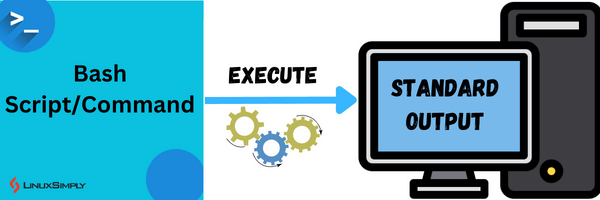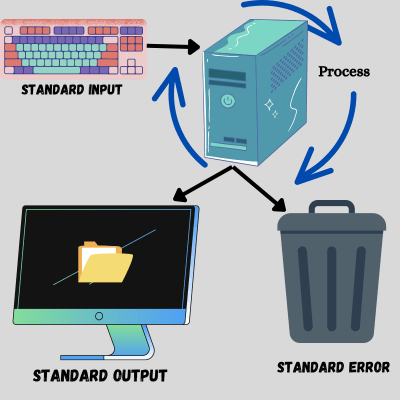FUNDAMENTALS A Complete Guide for Beginners

Bash output is the information generated by executing commands or scripts in the Bash Shell of the Linux OS. This output can be in different forms, such as a message, data , or error notification printed on the screen, or maybe graphical displays. Interpreting Bash output is very important for extracting information from the command-line environment.
Fundamentals of Bash Output
In this section, I will explore different ways of handling outputs using bash scripts, such as print on screen or redirection to a file, assigning output as a variable, inserting a new line as bash output, and finally how to format and manipulate these outputs.
Print Output of Bash
In this section, I will discuss standard output, which is printing the output directly on the screen. Whenever a command or script is executed, the output generated is shown on the screen by default.
Redirect Bash Command Output
Now, there is another way to print the output of the bash script, but in this case, you are going to see the output in a file. This is called redirection of output, where you are redirecting the standard output to a file using the operands (>) or (>>). Even if the file you are redirecting, does not exist, this will create it.
Bash Command Output to the Variable
In bash scripting, it is possible to capture the output of an executed script and store it in a variable using command substitution.
Command substitution allows you to capture the result of a command or executed script and then assign it to a variable. Furthermore, it allows you to save the output to a variable, which you can use later by calling the variable.
Display New Line as Output
Suppose you are printing a paragraph or writing by executing a bash script, and within the lines you want to insert a line break or take the next line into a new line. In this case, you have to use echo with an escape sequence ‘\n’ Also, there must be an -e option added to the echo command so that it can interpret the ‘\n’ as a new line character.
Formatting and Manipulation of Bash Output
Now as you have a firm idea about all types of bash output, it’s time to see how to format and manipulate these outputs. You can add colours to your Bash output using ANSI Escape codes, which are special character sequences. These codes will instruct the terminal to change text attributes like colour, style, and formatting.
Output Suppression
Suppose you have a script that generates excessive output that will clutter your terminal. In this case, you may want to suppress these outputs and run the script silently. This is called output suppression. You can do this by redirecting the output to /dev/null which is a special file that discards any data written to it.
Best Practices
Though I have covered almost every possible aspect related to Bash output, there are several practices that can improve the readability and maintainability of your scripts. So, here are some recommended practices that you may follow while handling Bash output.
- Be descriptive while showing the output or error message, it will aid in troubleshooting and understanding.
- Always try to separate output from program logic, and avoid mixing output formatting and printing with complex logic.
- Use proper indentation to your code to get an output in a readable manner, it improves the readability and makes it easy to follow.
- If your script generates a structured output you should document the format and expected fields so that other users may find it easy to understand the structure and use it effectively.
- Before executing the scripts, you should test and validate the output and must ensure that it matches your expectation and is consistent with the requirements.
Conclusion
Finally, bash output is an important component of bash scripting because it provides information about what is happening within the script. Your goal should be to improve the readability and usability of the output for any user by utilising various techniques. I hope you find this page and the articles linked here helpful in optimising your bash output.
People Also Ask
Related Articles
- How to Print Output in Bash [With 6 Practical Examples]
- What is Echo Command in Bash [With 3 Practical Examples]
- How to Echo New Line in Bash [6 Practical Cases]
- Cat Command in Bash [With 4 Practical Examples]
- How to Save Bash Output to File? [3 Practical Cases]
- How to Save Bash Output to Variable? [With Practical Cases]
- How to Set Command Output to Variable in Bash [2 Methods]
- How to Suppress Output in Bash [3 Cases With Examples]
- How to Change Color of Output Using Bash Script? [Easy Guide]
<< Go Back to Bash I/O | Bash Scripting Tutorial




